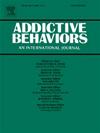基于正念的戒烟随机对照试验后的吸烟性别差异
IF 3.7
2区 医学
Q1 PSYCHOLOGY, CLINICAL
引用次数: 0
摘要
一些戒烟干预措施(如戒烟辅助工具)对戒烟结果产生了性别特异性影响,但行为干预措施(如基于正念的戒烟干预措施)迄今为止尚未正式报告性别干预措施的交互作用测试。为了弥补这一不足,我们对一项从加利福尼亚州招募的 RCT 数据集(N = 213)进行了二次分析,以统计检验性别干预对 7 天完全戒烟点戒烟率 (PPA)、戒烟天数比例和每日吸烟量的交互影响。对吸烟情况的评估采用了时间轴回溯法,时间跨度为每天进行为期 14 天的应用干预后的四周,以及干预阶段结束后的计划戒烟日期。所有模型都对尼古丁依赖基线进行了调整。研究组的性别比例相当(MBI:56%为女性;对照组:55%为女性),各组完成结果评估的比例与性别无关。调整后的分析表明,每日吸烟量存在显著的性别-干预交互效应([女性编码 1]:双向交互效应 IRR = 0.59,95 % CI:0.46-0.77,p <0.0001;对女性的效应:IRR = 0.68,95 % CI:0.57-0.81,对男性的效应:IRR = 1.14,95 % CI:0.95-1.37),但对完整的 7 天 PPA([女性编码 1] 双向交互作用效应 OR = 1.24,95 % CI:0.31-4.89,p = 0.76)或总禁欲天数比例([女性编码 1] 双向交互作用效应 OR = 1.97,95 % CI:0.53-7.37,p = 0.31)没有影响。与对照组的女性相比,每天接受基于应用程序的MBI、戒烟计划和戒烟辅助工作手册的女性(而非男性)每天吸烟的数量更少。与对照组相比,男性(而非女性)对MBI应用程序的使用明显减少。本文章由计算机程序翻译,如有差异,请以英文原文为准。
Sex differences in cigarette smoking following a mindfulness-based cessation randomized controlled trial
Some interventions for smoking cessation such as quit smoking aids show sex-specific effects on outcomes, but behavioral interventions such as mindfulness-based interventions (MBIs) for smoking cessation lack formal reporting of sex-intervention tests of interaction to date. To address this gap, we conducted a secondary analysis of a RCT dataset (N = 213), recruiting participants from California, to statistically test a sex-intervention interaction effect on complete 7-day point prevalence abstinence (PPA), proportion of days abstinent, and daily cigarettes smoked. Smoking was assessed using the timeline follow back method spanning the four weeks following a daily 14-day app-based intervention and a planned smoking quit date immediately following the intervention phase. All models adjusted for baseline nicotine dependence. The study groups had comparable sex proportions (MBI: 56 % female; control: 55 % female) and the ratio of outcome assessment completion by group was not dependent on sex. Adjusted analyses revealed a significant sex-intervention interaction effect for daily cigarettes smoked ([female coded 1]: two-way interaction effect IRR = 0.59, 95 % CI: 0.46–0.77, p < 0.0001; effect for female: IRR = 0.68, 95 % CI: 0.57–0.81, effect for male: IRR = 1.14, 95 % CI: 0.95–1.37), but not for complete 7-day PPA ([female coded 1] two-way interaction effect OR = 1.24, 95 % CI: 0.31–4.89, p = 0.76) or proportion of total days abstinent ([female coded 1] two-way interaction effect OR = 1.97, 95 % CI: 0.53–7.37, p = 0.31). Females, but not males, allocated to a daily app-based MBI with a quit plan and quit aid workbook smoked fewer cigarettes per day compared to females in the control group. Males, but not females, showed significantly less use of the MBI app compared to the control app.
求助全文
通过发布文献求助,成功后即可免费获取论文全文。
去求助
来源期刊

Addictive behaviors
医学-药物滥用
CiteScore
8.40
自引率
4.50%
发文量
283
审稿时长
46 days
期刊介绍:
Addictive Behaviors is an international peer-reviewed journal publishing high quality human research on addictive behaviors and disorders since 1975. The journal accepts submissions of full-length papers and short communications on substance-related addictions such as the abuse of alcohol, drugs and nicotine, and behavioral addictions involving gambling and technology. We primarily publish behavioral and psychosocial research but our articles span the fields of psychology, sociology, psychiatry, epidemiology, social policy, medicine, pharmacology and neuroscience. While theoretical orientations are diverse, the emphasis of the journal is primarily empirical. That is, sound experimental design combined with valid, reliable assessment and evaluation procedures are a requisite for acceptance. However, innovative and empirically oriented case studies that might encourage new lines of inquiry are accepted as well. Studies that clearly contribute to current knowledge of etiology, prevention, social policy or treatment are given priority. Scholarly commentaries on topical issues, systematic reviews, and mini reviews are encouraged. We especially welcome multimedia papers that incorporate video or audio components to better display methodology or findings.
Studies can also be submitted to Addictive Behaviors? companion title, the open access journal Addictive Behaviors Reports, which has a particular interest in ''non-traditional'', innovative and empirically-oriented research such as negative/null data papers, replication studies, case reports on novel treatments, and cross-cultural research.
 求助内容:
求助内容: 应助结果提醒方式:
应助结果提醒方式:


